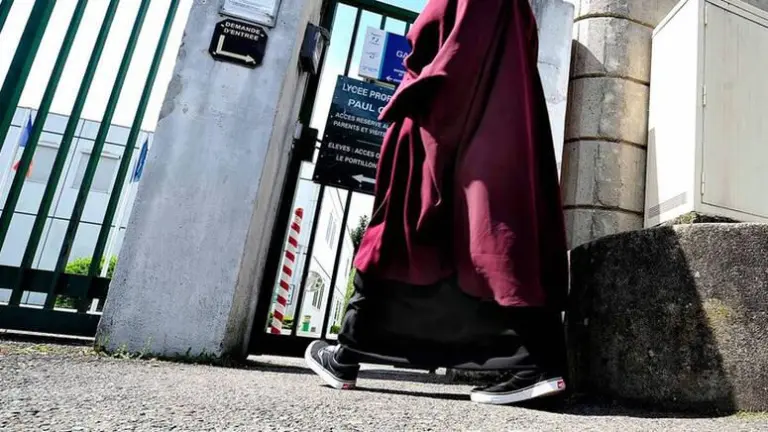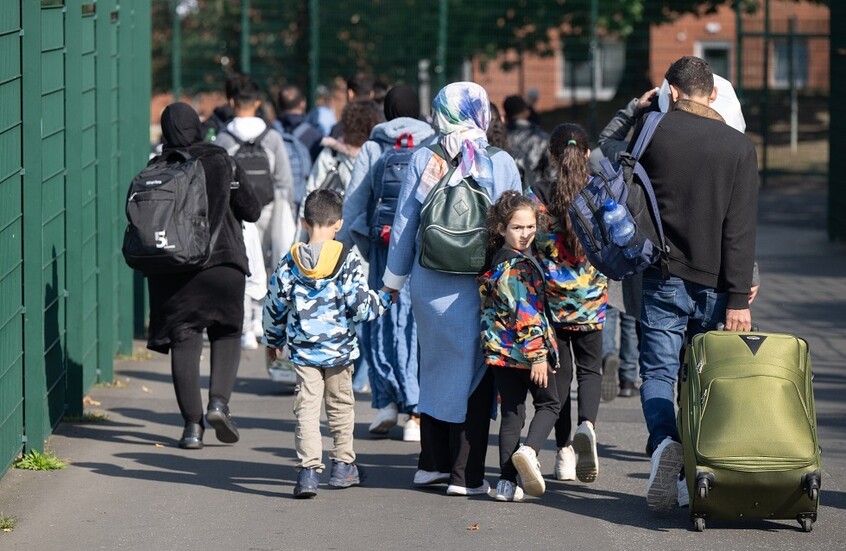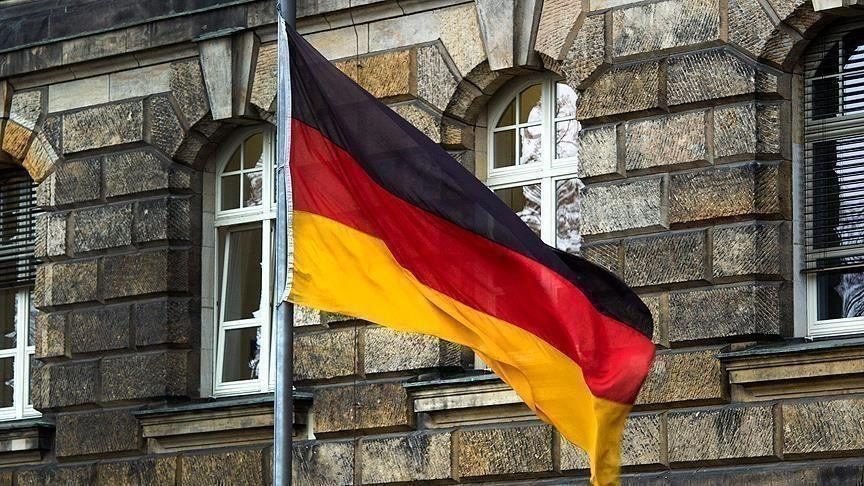
By: Ali Taha
France kicks off the new academic year with a major political controversy triggered by the decision of Gabriel Attal, French Education Minister, on Sunday, August 28, to ban the wearing of the “abaya” in schools for being a religious symbol, infuriating large segments of Muslims, Arabs and Africans in France, as they considered it a direct attack on their cultural identity.
To this day, the fight is still ongoing, and its chapters have seen hundreds of girls defying the ban, through submitting legal petitions and organizing rallies, ending with knocking on the United Nations’ doors. But given that 80% of French people approve the ban, the development of right-wing and extreme right-wing currents, and the dominance of populist ideas, a recent study suggests that the right-wing administration cannot back down from the decision.
In an interview with TF1, the Minister of Education stated that “going to school wearing the abaya is a religious manifestation aimed at testing the extent of the resistance of the Republic, in terms of what the school should form of a secular edifice… and the pupils’ religion may not be distinguished by the uniform they wear,” stressing that he seeks to establish “clear rules at the national level” for school principals at last.
The right-wing government has claimed that the ban was passed in response to the information revealed by the education minister that the percentage of the secularism law’s violations in schools has reached 120% since 2021, mostly due to wearing the abaya, a long-sleeved, loose-fitting robe that is frequently worn by Muslim girls.
Upholding the abaya ban by the French Council of State has sparked controversy between the right- and left-wing groups, as it was considered by the right-wing parties, and even part of the left, as a response to a “political attack” on secularism.
President Macron
In press statements, French President Macron justified his government’s ban of the abaya, which is worn by Arab, African and Islamic segments, saying: “We also live in our society with a minority, with people coming to challenge the republic and secularism.”
Macron added: “Sometimes the worst happens. We cannot carry on as if there was no terrorist attack and there was no Samuel Paty.”
On October 16, 2020, Samuel Paty, a 47-year-old history and geography teacher in the Paris region, was stabbed to death by the Chechen Abdoullakh Anzorov. Anzorov beheaded the instructor before being approached by the police, who then shot him.
This schoolteacher was killed days after he showed his students during a class on freedom of expression caricatures of the Prophet Muhammad. The jihadist said in an audio recording that he committed his act “in revenge for the Prophet.”
The French president continued, outlining the reasons for the decision to ban the garment, “I am merely saying that this system exists.”
He added: “It happened because a teacher was giving a lesson about secularism in his class, and then there was a frenzy on social media followed by people committing the worst.”
Nevertheless, Macron emphasized once again, “I don’t compare acts of terrorism to the uniforms worn by some Muslim girls.”
“I’m just letting you know that a major problem in our school is the prevalence of secularism.”
The Left & Greens
Meanwhile, the decision of the Minister of Education was roundly criticized by a number of leftist groups, including Les Verts “the Greens” and France Insoumise, as they regarded it as an irrational assault on the Islamic faith and an infringement on human freedoms.
Jean-Luc Mélenchon, the leader of the radical left bloc “France Insoumise”, voiced his regret on social media that “secularism should be a factor of peace and not division… and the government is waging an artificially absurd religious war over feminist attire.”
By the same token, Mathilde Panot, leader of the ” La France Insoumise” parliamentary bloc, considered that the new minister Attal “is obsessed with Muslims, specifically Muslim women… He ignored the issues that the education sector faces, such as a lack of teachers and low-achieving pupils, focusing his attention on Muslim girls’ clothing.” Her fellow MP Clementine Autain added that the new minister had invented a “clothing police”.
Vincent Brengarth, a lawyer for Muslim Rights Action, said the abaya should be considered a traditional garment, not a religious one, and accused the French government of seeking political gain with the ban.
On August 30, the UN criticized France’s decision to ban the abaya in primary and secondary schools.
According to Marta Hurtado, a spokeswoman for the UN Human Rights Office, “international human rights standards stipulate that the restrictions on manifestations related to religion or belief, including the choice of clothing, should only be imposed under very limited circumstances, including those related to safety, order, health, or public morals.”
In spite of this, the French Council of State upheld the ban on the abaya in schools, dismissing an appeal from the Action for the Rights of Muslims (ADM), despite claims from human rights organizations that the government is discriminating against minorities because of their culture.
According to a statement released by the Council of State on September 8: “Wearing the abaya reflects religious orientation and, therefore, the ban does not constitute a serious or illegal attack on the right to respect for private life, freedom of worship, and the right to education in accordance with the best interests of the child.”
A 15-year-old Muslim student who was expelled from her school for wearing a kimono—a Japanese dress that the veiled students resorted to wearing after the ban on the abaya—because it was loose— has found no other way than knocking at the UN’s doors to file a complaint about being “discriminated” because of her religious affiliation.
As such, a 15-year-old girl, who lives in Lyon, sent a complaint to Ashwini K. P., the UN Special Rapporteur on contemporary forms of racism, racial discrimination, xenophobia and related intolerance, on “the discrimination she has been subjected to on the basis of her religious affiliation”.
On top of that, hundreds of girls had defied the ban and came on the morning of the first day of school wearing abayas, but they were sent home.
Notably, France had followed the path of separating religion and state with the 1905 law of secularism. The wearing of the hijab in schools and other public settings was first outlawed in France in 1989, but on November 27 of that same year, the Supreme Administrative Court ruled that doing so “does not violate secularism.”
Although the wearing of the hijab has been a contentious issue in the country for many years, a ruling banning the wearing of visible signs of any religious affiliation in public schools was made in 2004. Under this ruling, students who violate this rule are only allowed to enter the school, not the classroom, provided that there is communication between the offending family and the Ministry of Education. This ban includes Christian crosses, Jewish kippahs, and Islamic headscarves. Unlike the hijab, however, the abaya was not clearly defined within this law, and in 2010, France banned the wearing of full-face covering garments such as burqas and niqabs in public.
In fact, the controversy over wearing the abaya is not the first of its kind during President Macron’s term, but it was preceded by a much-debated law, the anti-separatism law. It was introduced by Interior Minister Gérald Darmanin in October 2020, and then finally adopted by members of the National Assembly in France in July 2021. Today, this law is officially known as the bill “to strengthen respect for the principles of the Republic,” and it was first defined as “Islamist Separatism Bill.”
Darmanin described it at the time as a legislation that “provides concrete responses to identity-based isolationism, as well as to the spread of Islamic extremism, which represents an ideology hostile to the founding principles and values of the Republic.” However, opponents, especially the leftists, viewed the law as targeting Muslims and having a limited understanding of secularism. In contrast, the French government at the time defended the idea as “strengthening the values of the secular republic,” just like it did recently when it decided to outlaw the abaya because wearing one “threatens the secularism of the state.”
Many considered the law a serious move, as it provides for the criminalization of Muslims who violate the laws of the Republic with a penalty of 5 years imprisonment, and fines of up to €75,000 for anyone who threatens or assaults an official or employee.
Right-wing MP Annie Janfar even suggested adding Moroccan and African folk dances and flying foreign flags at weddings to the list of taboos that might be penalized under the “Islamist anti-separatism law.”
According to the independent news website Mediapart, this law also led to the closure of many mosques and Quranic schools, as well as the suspension of operations at a number of Muslim-run organizations and businesses. In addition to the investigation of thousands of Islamic institutions, 900 of them were shut down, and more than €55 million was seized.
In this context, scholar Joseph Massad says, “France’s conflict with Islam is the legacy of 200 years of colonial brutality. It is a French secular tradition that has been recognized by the French since ancient times.”
A straightforward comparison of France with its “neighbors” in the Western democracies demonstrates how different, diversified, and incompatible France is with other European countries with large Muslim communities. The difference is likely evident in the Anglo-Saxon paradigm, which recognizes the church, but does not prohibit religious symbols in the public or private sphere.
Even in Spain, the “Law of 2010”, which established the principle of secularism, prohibits wearing the cross in schools, but the Ministry of Education does not impose any restrictions, allowing the regions free to regulate the affairs of their populace. Given the strong religious tradition of the Spanish and the proliferation of churches, controversy regarding religious practices is almost absent.
Germany, on the other hand, is a nation that values tolerance for minorities, given its contemporary history. There is no separation of religion and state, and religious minorities have the right to challenge any decision they believe to be arbitrary.
In Sweden, all religious symbols are permitted in public and private places in accordance with a law guaranteed by the country’s constitution. Not far from Sweden, Denmark has been banning face covering by wearing the burqa since 2018, and enforce a fine on anyone who violates this law.
In Norway and Finland, the burqa is banned, and the National Football League gives Muslim girls a sports hijab to encourage them to play sports.
Following his admission that “Muslims live in isolation that may threaten the principle of secularism,” French President Emmanuel Macron has come under fire for a number of things, including the claim that the French government is to blame for these groups’ segregation.
Isn’t it the one who lured Africa and Maghreb people to work in coal mines and auto industries and placed them in “ghettos” on the edges of towns, taking care to keep them separate from white Europeans?
What made things worse, as observers note, is that France has not noticed that this community has grown and now carries a significant human and economic weight, with second and third generations of immigrants who, unlike their parents, have a dual culture, and that these individuals uphold their religious beliefs as well as the nation in which they were raised (that is, France).
In fact, it may have been noted, as some believe, that officials and candidates for the French presidential elections have turned to opposing Islam as a source of electoral support. Every time, to terrify the French and win votes in elections, the media is filled with overblown discourse about immigration and Islam.
The issue of banning the abaya in schools is just the most recent illustration of politicians buttering up the extreme right by promoting anti-Islamic extremism in a populist political setting at the expense of the Muslim minority, as evidenced by numerous studies, the most recent of which was the work of the Epsos Institute. It revealed that 80% of the French support the decision of the Minister of Education to ban the abaya in schools, including the French with left-wing backgrounds, as 65% of them also support the decision.
In fact, despite making up about 10% of the population, neither the human nor economic weight of the Muslim community nor attempts to organize, initiated by some governments, have been able to free the Muslim community, particularly the North African ones, from the cycle of marginalization and stigmatization in which it has been mired for years. This situation is one that is likely to worsen in the near future due to the country’s significant rise of the extreme right.
Written on September 26, 2023.





